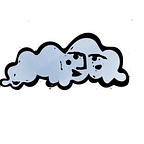Behind the Scenes With the Product Team
What — and who — does it take to build something like Comp?
Here’s how we organize ourselves and our projects, and how we work together to keep evolving the app.
Adobe Comp CC was a project that started small, but it quickly required a bigger team. As the rough early plans evolved into feasible prototypes, a diverse, versatile group — veterans of and newcomers to building creative pro software, working not just at Adobe’s HQ in San Jose and San Francisco, but also in New York, Florida, France and more — assembled to bring the app to fully functional life.
Our engineering team tackles the architecture and coding of the iOS app. There’s always a long list of features to build, based on a balance of user feedback and internal ideation; these are continuously prioritized and split up amongst the ten-person team. Individual tasks — say, sync issues or Comp’s ability to send work to Creative Cloud desktop apps with the touch of a button — are divided up based on individual areas of expertise. Solutions are coded using GIT, an open source system for managing files, in individual feature branches; there, they’re refined and tested on “as many devices as we can,” architect Rick Seeler says — think iPads and iPhones running current iOS updates as well as those that go way, way back. Once they’re perfected, the features are incorporated into the main developer branch, which is where the most up-to-date code lives.
Design is a three-person team responsible for the UI and all the the visuals and that correspond with these these features, who also offer critical insight into how the app should look, feel, and function. For example: Gestures — now an absolutely essential element of Comp — were on an early wish list, but weren’t a guaranteed part of the original plan for the app. It wasn’t until designer Mathieu Badimon and prototyping engineer Phil Baudoin began experimenting with various methods for creating shapes on touchscreens that it became clear that a drawing engine would be more than a gimmick — it could be a game-changer. Ultimately, it takes a keen sensibility to suss out what elements make the cut. “I approach my job as a kind of editor,” Badimon says. “Everyone, either inside Adobe or outside Adobe, has a lot of ideas and thoughts about what a design tool should be. What I hope to bring is a coherent vision for the product — selecting some features, avoiding others, and trying to create a clear and natural experience.”
Feedback — receiving it, and processing it — is a major factor in envisioning the future of our app. The entire team has access to and reads all feedback that comes through. Meanwhile, our dedicated community engagement and support manager Sue Garibaldi is on top of the Comp forums; every comment is archived, every comment gets a response, and top requests are compiled into a monthly round-up sent out to the gang.
With experience that runs the gamut from graphic design to fine art painting, photography to print production, our Quality Engineering (QE) team puts those creative skills to use by, well — using the app. “I like to think of QE as a voice for our users,” lead quality engineer Thomas Lin says. Incorporating input from product manager Will Eisley — who collaborates with design and engineering to define and prioritize features, then marketing and learning teams to help users understand how those features work — and Sue’s regular reports, QE puts together its own case studies — like sample posters, webpages, and wireframes, and other projects — to emulate the way someone might use the app, identify bugs and potential issues for the developers to fix.
All of these moving parts come together in project management apps Trello and Slack, which provide key forums for communication — the ties that bind the teams. Trello tracks each and every feature being built as they transfer from person to person, on the way from idea to implementation. “If you want to know what everyone’s doing on the team, it’s the place to go. We live by it,” says Seeler. Slack’s chatrooms and real-time messaging threads are the go-to for quick convos and check-ins.
Stay tuned for more from the crew! In the meantime, we’ve put together some of our fave sites and follows for like-minded folks: Designer News (@designernewsbot); Medium (@medium); Bret Victor (@worrydream); Luke Wroblewski (@lukew); Flipboard (@flipboard); iOS Developer Library; Google Design (@GoogleDesign); Ed Nacional (@ednacional); Wired Design (@wired_design); 99% Invisible (@99piorg); Deviant Art (@DeviantArt); Level Up Tutorials (@LevelUpTuts, @stolinski); Paul Trani (@paultrani); Nguyen Uy Vu; Brand Box; Gizmodo (@gizmodo); Peter Saville; Syd Weiler
Comp is free (!) for Creative Cloud subscribers* — download it now for your iPhone or iPad. Not yet a Creative Cloud member? Sign up for a FREE Adobe ID today and try out the latest CC apps too.
*Android users, hold tight — we expect to have a beta release for you this summer.
Check out our growing visual gallery for how-tos and at-a-glance guidance on navigating Comp.
